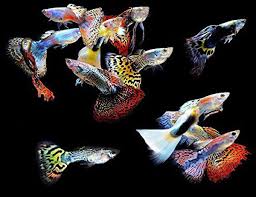
In many cultures around the world, food is more than nourishment—it is a vessel of tradition, belief, and symbolism. Among the wide array of meaningful dishes, few capture the essence of good fortune as charmingly as the fish-shaped cake.
From festive treats in East Asia to decorative pastries in parts of Europe, fish-shaped cakes appear in various forms, textures, and flavors. Yet, regardless of their origin, they consistently convey one message: luck, abundance, and positive transformation.
Why is the shape of a fish so important? How have these cakes evolved across cultures? And what makes them so special during holidays, celebrations, and new beginnings?
This article explores the rich meaning, culinary diversity, and enduring popularity of fish-shaped cakes—a delightful combination of sweetness and symbolism.
The Symbolism of Fish in Cultural Beliefs
Fish have long held symbolic meaning across civilizations. In many Eastern cultures, the fish is considered a sacred creature, often representing wealth, prosperity, fertility, or renewal.
1. Chinese Culture: “Fish” and “Surplus”
In Mandarin Chinese, the word for fish (yú, 鱼) sounds identical to the word for surplus (yú, 余). This phonetic similarity has led to the phrase “年年有余” (nián nián yǒu yú), meaning “may you have abundance every year.” As a result, fish-shaped dishes, especially desserts, are featured during Lunar New Year celebrations to wish for prosperity in the coming year.
Fish-shaped cakes in China often appear in vibrant red packaging, with detailed scales and golden decorations to attract good luck. They are typically filled with lotus seed paste, red bean paste, or custard.
2. Vietnamese Tradition: Carps and Transformation
In Vietnam, fish—particularly carp (cá chép)—are central to the Tết (Vietnamese New Year) tradition. On Ông Công Ông Táo (Kitchen Gods’ Day), families release live carp into rivers to carry their prayers to heaven. Fish-shaped cakes, often modeled after these sacred carps, symbolize transformation, virtue, and blessings.
Vietnamese bánh cá can range from rice flour treats to sponge cakes molded in fish forms. These are often colored with natural dyes and decorated with auspicious patterns.
3. Japanese Taiyaki: A Sweet Messenger of Luck
In Japan, the iconic Taiyaki is a fish-shaped cake filled with red bean paste or custard. Its shape resembles a sea bream (tai), a fish associated with celebrations and considered a harbinger of happiness and good luck.
Taiyaki is sold at festivals, markets, and even train stations, often with a crispy exterior and a warm, soft filling. It’s a portable bite of tradition and joy—sweet and symbolic at once.
The Anatomy of a Fish-Shaped Cake
While fish-shaped cakes vary from country to country, they typically share several key elements:
1. The Shape: Symbolism in Design
The most defining characteristic is, of course, the fish shape. Artisans and bakers take great care to mold cakes that resemble real fish, often complete with detailed fins, scales, eyes, and tails.
The direction the fish faces, the curvature of the body, and the size can all carry meaning. For example, in Chinese culture, two fish swimming together symbolize marital harmony and happiness.
In some modern bakeries, fish-shaped cakes are even designed with artistic embellishments—gold flakes, edible pearls, or hand-painted patterns.
2. The Ingredients: Sweet Fillings with Meaning
Depending on the culture, fish-shaped cakes may include:
- Red bean paste: Symbolizing happiness and purity.
- Lotus seed paste: Representing fertility and spiritual enlightenment.
- Custard or cream: A modern, indulgent twist.
- Mung bean or coconut: Popular in Vietnamese and Southeast Asian versions.
Many cakes are made with rice flour, wheat flour, or batter similar to pancake or waffle mix, depending on the texture desired.
3. Cooking Techniques
Fish-shaped cakes may be:
- Baked in molds, resulting in soft, fluffy textures (common in Korean or Vietnamese styles).
- Pan-cooked, like Japanese Taiyaki, creating a crispy outside.
- Steamed, preserving moisture and offering a glutinous, chewy texture.
Each technique enhances a different aspect of flavor, tradition, and symbolism.
When Are Fish-Shaped Cakes Served?
These symbolic cakes are most commonly enjoyed during festivals, life milestones, or seasonal transitions, such as:
1. Lunar New Year
In China, Vietnam, and Korea, fish-shaped cakes are shared among families to wish each other a prosperous and lucky year. They’re often placed on altars, gifted to elders, or served as dessert during festive meals.
2. Mid-Autumn Festival
In addition to mooncakes, some families make or buy fish-shaped cakes during the Mid-Autumn Festival. The fish design adds variety to traditional round cakes and delights children with its playful form.
3. Weddings and Engagements
Fish are seen as symbols of fertility and harmony. In many Vietnamese and Chinese weddings, fish-shaped cakes are included in gift trays or banquet desserts.
4. Birthdays and Anniversaries
Modern bakeries now offer fish-shaped cakes for birthdays, representing well-wishes for growth, achievement, and abundance in the year ahead.
Fish-Shaped Cakes in Modern Times
While deeply rooted in tradition, fish-shaped cakes have embraced modern creativity and global trends.
1. Fusion Fillings and Flavors
Contemporary versions may include:
- Chocolate hazelnut spread
- Cheese or salted egg yolk
- Matcha (green tea) cream
- Taro or sweet potato
- Fruit jams or jellies
These updated flavors appeal to younger generations while preserving the traditional shape and meaning.
2. Vegan and Gluten-Free Options
With growing dietary awareness, many bakeries now offer plant-based or allergen-free versions. These are popular among health-conscious consumers who still want to enjoy cultural treats.
3. Gift Packaging and Customization
High-end bakeries now present fish-shaped cakes in ornate boxes, often with calligraphy, metallic accents, or customizable messages. Some are even packaged as luxury gifts for corporate clients, weddings, or holiday celebrations.
4. Street Food Revival
In Japan and Korea, Taiyaki and similar cakes have made a resurgence as popular street food. Vendors often offer them hot off the griddle, with a choice of sweet or savory fillings—cheese and sausage, pizza-style, or chocolate banana.
Educational and Cultural Value
Fish-shaped cakes also serve as educational tools in cultural preservation. Many schools and cultural centers include fish-shaped cake-making in seasonal workshops to teach children about folklore, tradition, and culinary skills.
In Vietnamese Tết preparations, grandparents may involve grandchildren in making bánh cá, teaching them not only recipes but also family history and ancestral respect.
In diasporic communities across Europe, North America, and Australia, fish-shaped cakes help families maintain cultural identity and pass down values to younger generations.
Why Fish-Shaped Cakes Remain Relevant
What gives fish-shaped cakes their timeless appeal is not only their flavor but the layers of meaning they carry. In a world of fast food and disposable trends, these cakes offer something enduring:
- A visual reminder of tradition
- A symbol of hope, transformation, and luck
- A gesture of love and respect when shared
They bring generations together around the table and remind us that even the simplest foods can carry deep emotional and cultural significance.
Moreover, they are remarkably adaptable—whether used in ceremonial offerings, served as trendy desserts, or given as gifts, fish-shaped cakes continue to evolve while staying true to their roots.
How to Make Your Own Fish-Shaped Cake at Home
For those who wish to try their hand at making this symbolic treat, here’s a basic overview:
Ingredients:
- 1 cup all-purpose flour or glutinous rice flour
- 1 egg
- 1 tbsp sugar
- ½ cup milk or coconut milk
- ½ tsp baking powder
- Filling: red bean paste, custard, or taro
Instructions:
- Mix flour, egg, sugar, milk, and baking powder to create a batter.
- Preheat your fish-shaped mold (available online or in specialty stores).
- Pour a thin layer of batter into the mold.
- Add a spoonful of filling in the center.
- Cover with another layer of batter.
- Close the mold and cook until golden brown, about 2–3 minutes per side.
- Let cool slightly before serving.
Enjoy with tea, or share with loved ones during a festive occasion!
Conclusion: A Sweet Taste of Good Fortune
Fish-shaped cakes are more than just visually delightful—they are edible expressions of luck, love, and legacy. Whether crafted by hand at home or purchased from a boutique bakery, these cakes invite us to reflect on abundance, harmony, and shared joy.
In every golden crust and creamy filling lies a wish: that life will flow like a fish in clear water—free, full, and flourishing.
So the next time you see a fish-shaped cake, take a moment to appreciate not only its taste but the centuries of meaning it carries. Because sometimes, the luck we seek is already in our hands—in the form of a small, sweet fish.









